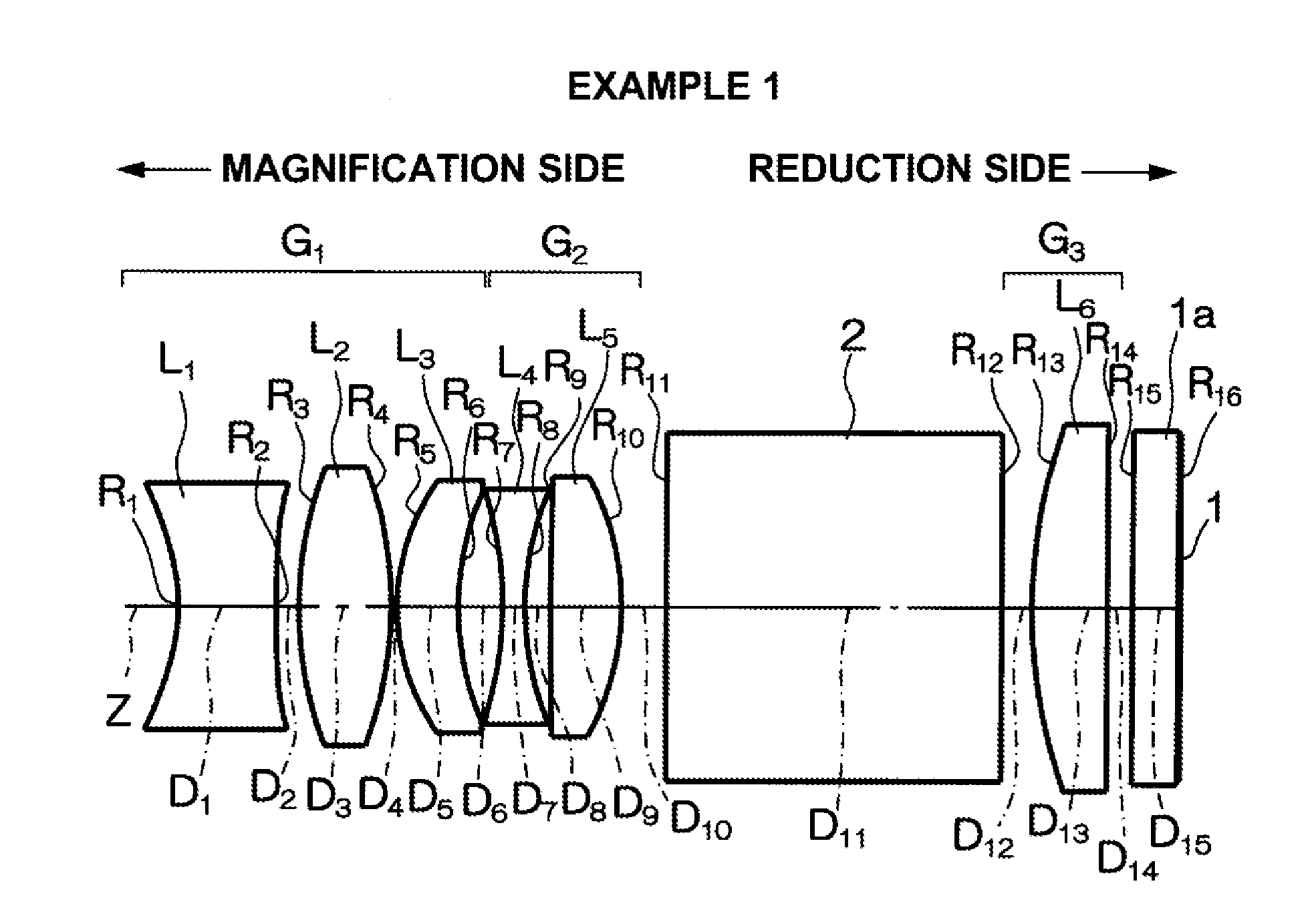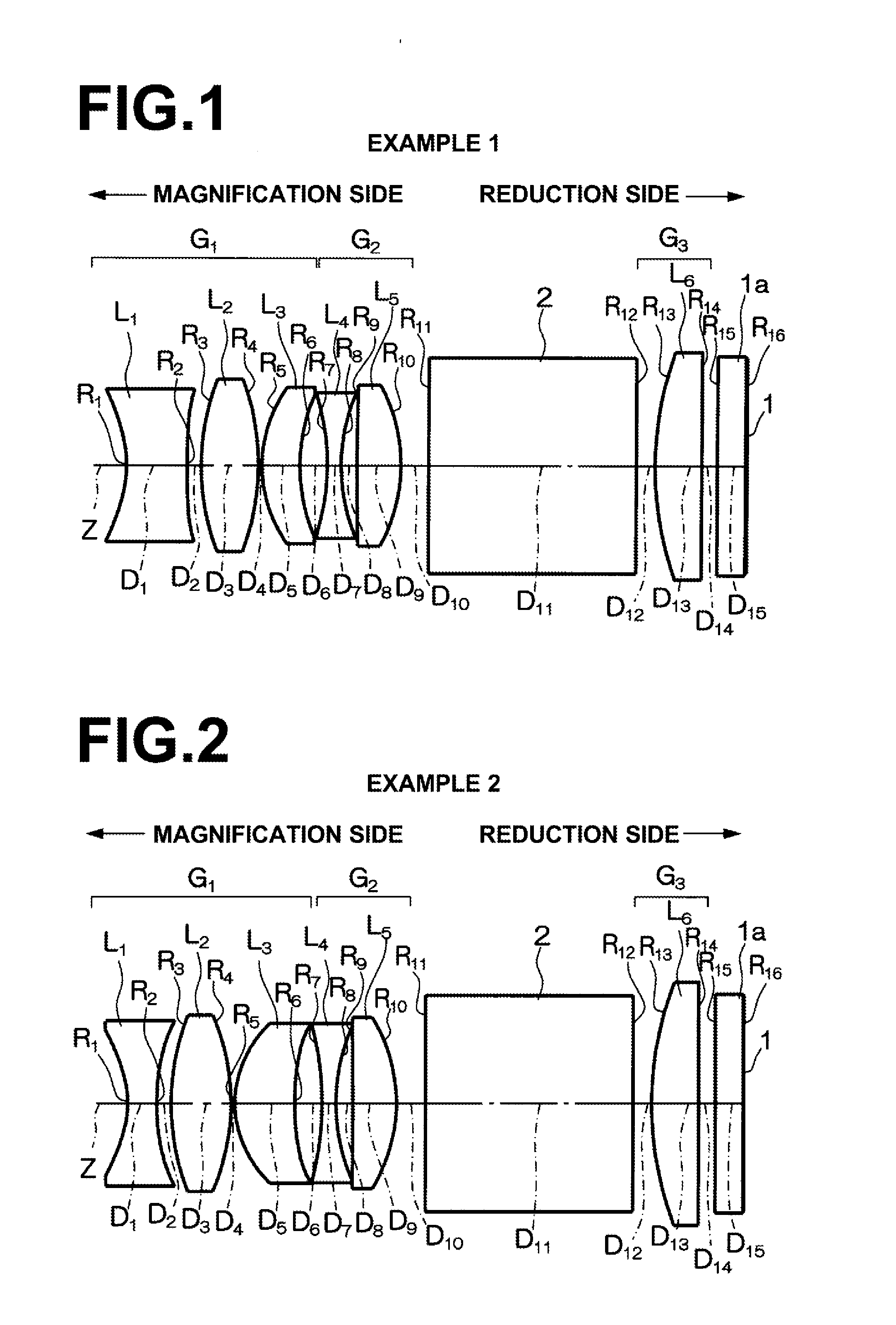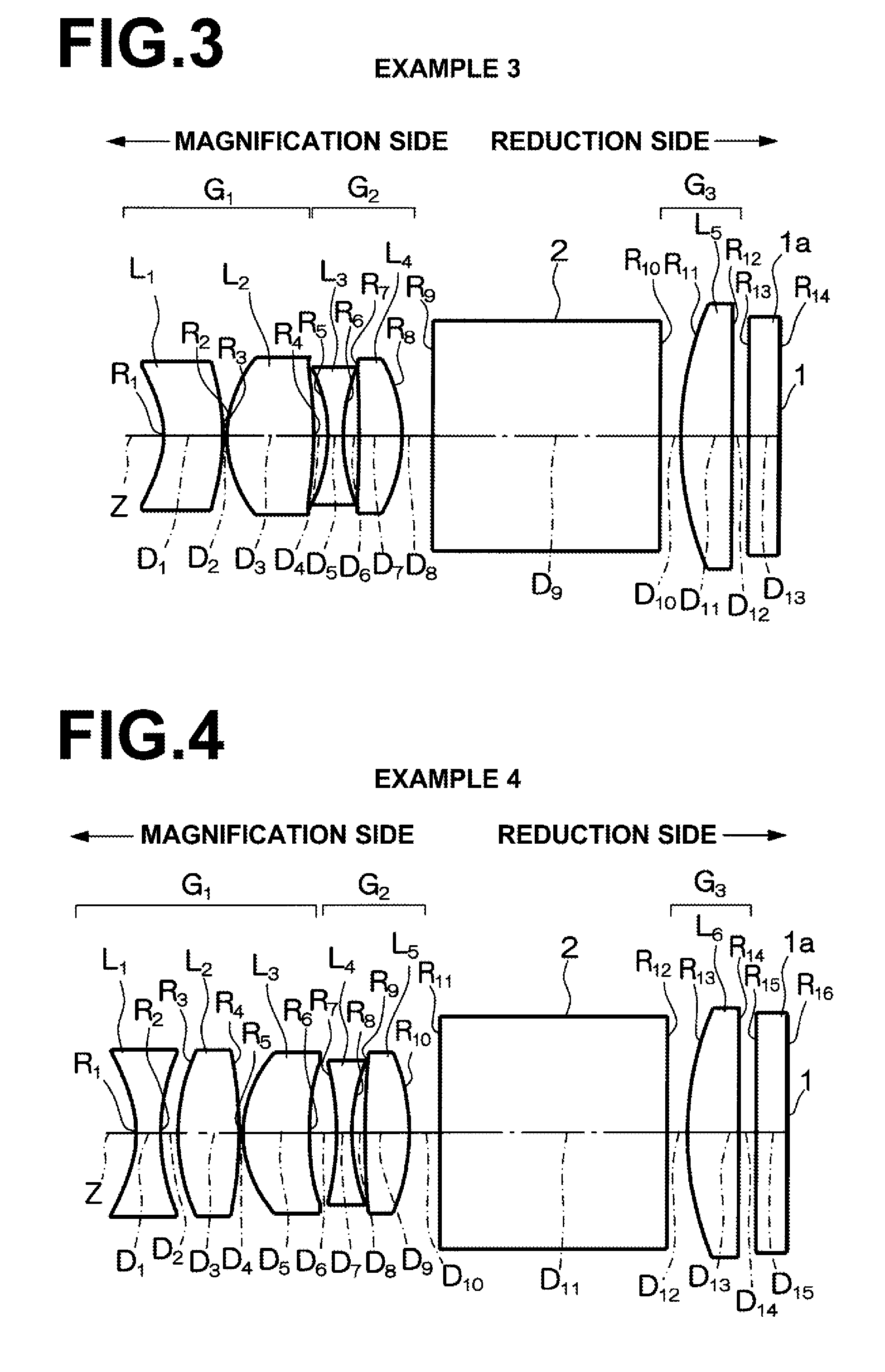Projection lens and projection-type display apparatus using the lens
a projection lens and projection-type technology, applied in the field of projection lenses, can solve the problems of insufficient reduction of the size of the entire lens system and the length of the entire system, and achieve the effects of reducing the outer diameter of at least one reduction-side lens, preventing the length of the entire system, and reducing the outer diameter
- Summary
- Abstract
- Description
- Claims
- Application Information
AI Technical Summary
Benefits of technology
Problems solved by technology
Method used
Image
Examples
example 1
[0128]A projection lens in Example 1 is structured as illustrated in FIG. 1. Specifically, the projection lens is composed of first lens group G1, second lens group G2, and third lens group G3, which are sequentially arranged from the magnification side of the projection lens. The first lens group G1 is composed of first lens L1, second lens L2 and third lens L3, which are sequentially arranged from the magnification side. Both surfaces of the first lens L1 are aspheric (double concave (concave-concave) in the vicinity of the optical axis), and the first lens L1 is made of plastic. The second lens L2 is a double convex (convex-convex) lens made of glass. The third lens L3 is a positive meniscus lens having a convex surface facing the magnification side. The second lens group G2 is composed of fourth lens L4 and fifth lens L5. The fourth lens L4 is a double concave lens, and the fifth lens L5 is a double convex lens. The third lens group G3 is composed of sixth lens L6, which is a pl...
example 2
[0137]FIG. 2 is a schematic diagram illustrating the structure of a projection lens in Example 2. The projection lens in Example 2 is structured in a substantially similar manner to Example 1. However, in the projection lens of Example 2, both surfaces of the third lens L3 in the first lens group G1 are aspheric, and the third lens L3 is made of plastic. Further, in the projection lens of Example 2, the fifth lens L5 in the second lens group G2 is a positive meniscus lens having a convex surface facing the reduction side of the projection lens.
[0138]Further, in the projection lens of Example 2, a wide space is maintained between the second lens group G2 and the third lens group G3, and a color combination prism (or a ray separation prism) 2 is arranged in the space between the second lens group G2 and the third lens group G3. The space between the second lens group G2 and the third lens group G3 is set so as to satisfy the range defined by the formula (1). Specifically, the value of...
example 3
[0144]FIG. 3 is a schematic diagram illustrating the structure of a projection lens in Example 3. The projection lens in Example 3 is structured in a similar manner to Example 1. However, Example 3 greatly differs from Example 1 in that the projection lens of Example 3 is composed of five lenses. Specifically, the projection lens of Example 3 is composed of first lens group G1, second lens group G2 and third lens group G3, which are sequentially arranged from the magnification side. The first lens group G1 is composed of first lens L1 and second lens L2, which are sequentially arranged from the magnification side. Both surfaces of the first lens L1 are aspheric, and the first lens L1 is made of plastic (negative meniscus lens shape having a concave surface facing the magnification side in the vicinity of the optical axis). Both surfaces of the second lens L2 are aspheric, and the second lens L2 is made of plastic (double convex lens shape in the vicinity of the optical axis). Furthe...
PUM
 Login to View More
Login to View More Abstract
Description
Claims
Application Information
 Login to View More
Login to View More - R&D
- Intellectual Property
- Life Sciences
- Materials
- Tech Scout
- Unparalleled Data Quality
- Higher Quality Content
- 60% Fewer Hallucinations
Browse by: Latest US Patents, China's latest patents, Technical Efficacy Thesaurus, Application Domain, Technology Topic, Popular Technical Reports.
© 2025 PatSnap. All rights reserved.Legal|Privacy policy|Modern Slavery Act Transparency Statement|Sitemap|About US| Contact US: help@patsnap.com



